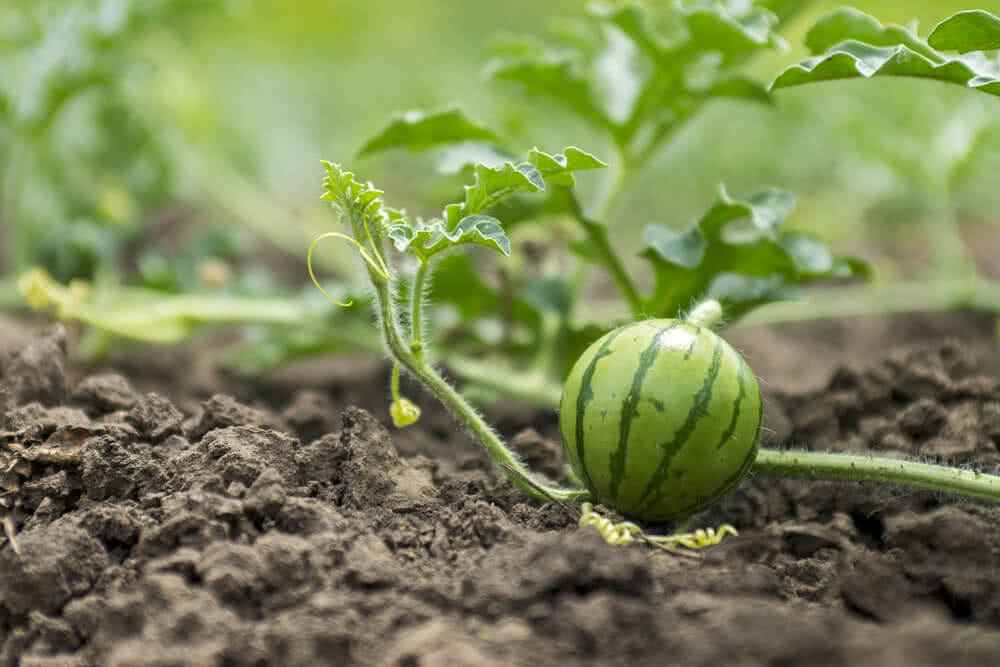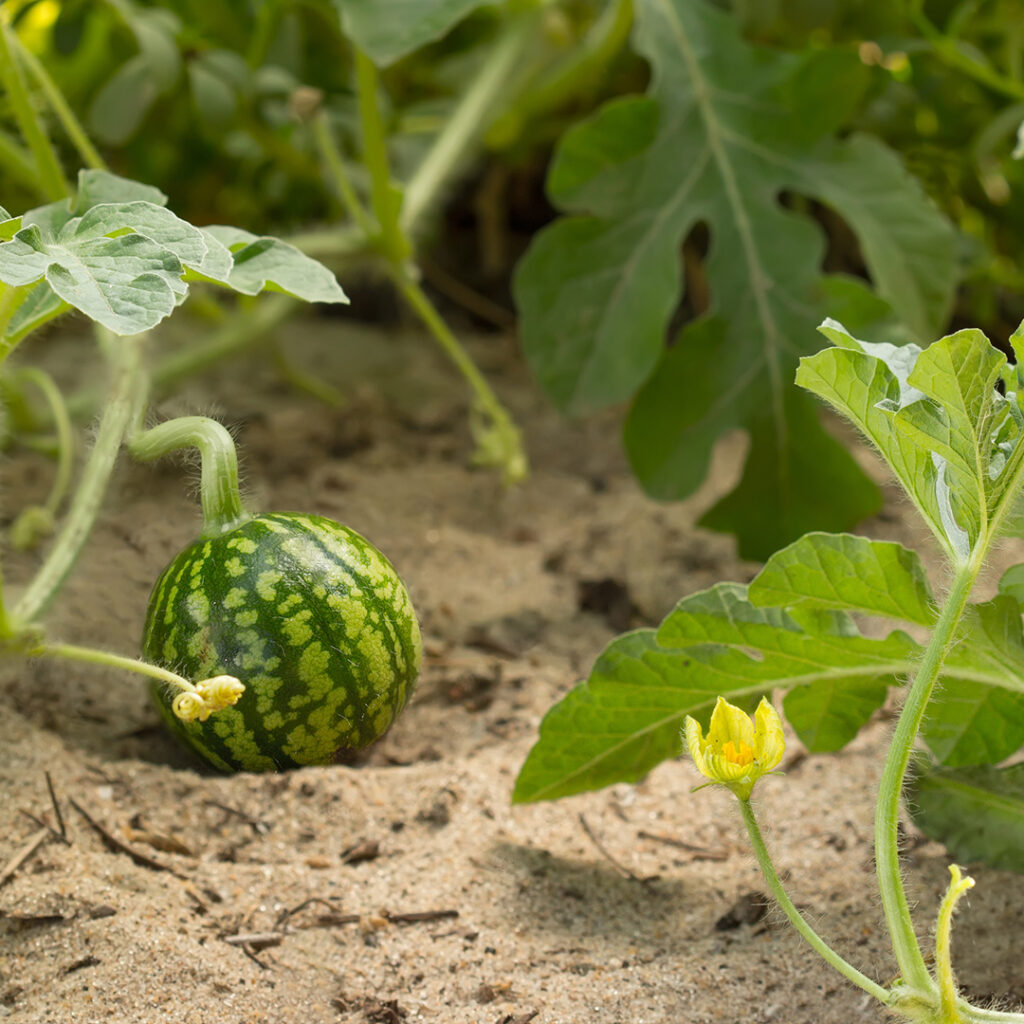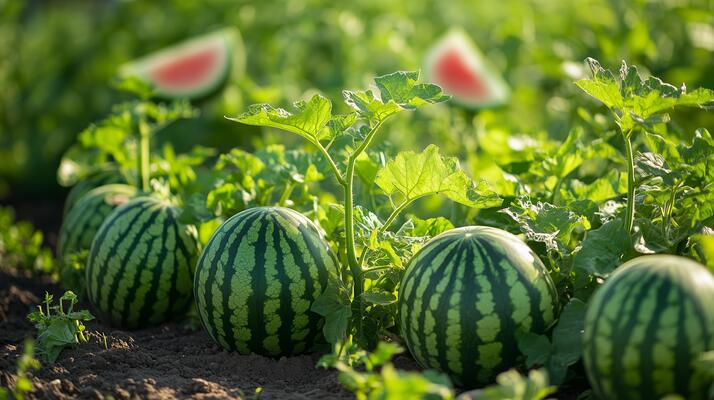There’s nothing quite like biting into a juicy, sun-ripened watermelon on a hot summer day — especially when it’s one you’ve grown yourself! Watermelon is a classic warm-weather crop that thrives in home gardens when given the right conditions. With proper planting techniques, care, and a little patience, you can enjoy baskets of sweet, refreshing fruit from your own backyard.
In this detailed guide, we’ll show you exactly how to plant watermelon for sweet harvests — covering everything from selecting the right variety to harvesting at the perfect time.

Why Grow Watermelon in Your Garden?
Growing watermelon isn’t just about the delicious reward at the end. These sprawling vines can also:
- Provide natural ground cover
- Add a touch of green to large sunny spaces
- Offer a fun, educational crop for kids
- Yield fruit varieties you can’t always find in stores
Plus, the satisfaction of harvesting your own sun-warmed melon is hard to beat.

Choosing the Right Watermelon Variety
Watermelons come in a range of shapes, sizes, and flavors. Selecting the right type for your climate, space, and taste preferences is the first step to a successful harvest.
Common Watermelon Types:
- Seedless Watermelon: Popular and easy to eat, but requires planting with a seeded variety for pollination.
- Picnic Watermelon: Large, classic oblong melons weighing 15-50 lbs. Examples: ‘Crimson Sweet,’ ‘Jubilee.’
- Icebox Watermelon: Smaller varieties (5-15 lbs) perfect for smaller gardens. Examples: ‘Sugar Baby,’ ‘Tiger Baby.’
- Yellow/Orange Flesh: Unique, super-sweet melons like ‘Yellow Doll’ and ‘Orangeglo.’
Pro Tip: Choose varieties suited to your region’s growing season. Short-season types (like ‘Sugar Baby’) mature in 70-80 days, while larger melons can take 90-100 days.

Best Time to Plant Watermelon
Watermelon loves heat. Wait to plant outdoors until:
- Soil temperature reaches at least 70°F (21°C)
- All danger of frost has passed
- Night temperatures stay consistently above 60°F (16°C)
In most regions, this means planting in late spring or early summer.

Choosing the Perfect Planting Site
Watermelon vines need room to sprawl and soak up sunshine.
Ideal Conditions:
- Full sun (at least 8 hours daily)
- Well-drained, sandy or loamy soil
- pH between 6.0 and 7.0
- Protection from strong winds (optional, but helpful for young vines)
Avoid: Waterlogged or clay-heavy soil, which can lead to root rot.
Preparing the Soil
Healthy soil is essential for those famously sweet melons.
- Loosen soil to a depth of 12-18 inches
- Mix in well-aged compost or manure (about 2 inches deep)
- If soil is heavy, amend with sand or organic matter for better drainage
- Add a balanced organic fertilizer (10-10-10) before planting
Optional: Form mounded hills or raised rows to improve drainage and heat retention.
How to Plant Watermelon
You can grow watermelon from seeds or seedlings. Both methods work well — seeds are budget-friendly, while seedlings jumpstart the growing season.
From Seed:
- Sow 3-4 seeds per mound, about 1 inch deep
- Space mounds 3-5 feet apart in rows 6-8 feet apart
- Thin to the 2 strongest seedlings per mound once sprouted
Seed Starting Indoors: In cooler climates, start seeds indoors 3-4 weeks before the last frost. Transplant carefully once soil warms.
From Seedlings:
- Dig a hole slightly larger than the root ball
- Place seedling at the same depth as in its container
- Gently firm soil around the plant
- Water well after planting
Watermelon Growing Care Guide
Watermelon plants are fairly easygoing, but they have specific needs for water, nutrition, and space.
Watering:
Watermelon loves moisture, especially during fruit development.
- Keep soil evenly moist (but not waterlogged)
- Water deeply 1-2 times per week
- Reduce watering slightly as fruit ripens to concentrate sweetness
- Use drip irrigation or soaker hoses to avoid wetting leaves and reduce disease
Pro Tip: Mulch around plants to conserve moisture and suppress weeds.
Fertilizing:
Watermelons are heavy feeders.
- Use a balanced fertilizer (10-10-10) at planting
- Once vines start to run, switch to a high-potassium fertilizer to boost fruit development
- Apply every 3-4 weeks following package instructions
Avoid over-fertilizing with nitrogen after flowering — it encourages leafy growth at the expense of fruit.
Mulching:
Apply a 2-3 inch layer of organic mulch (straw, shredded leaves) around plants to:
- Keep soil moist and cool
- Suppress weeds
- Reduce fruit contact with soil, minimizing rot
Training and Supporting Vines (Optional)
Watermelon vines can spread 10-20 feet in all directions. If space is limited:
- Use trellises for small-fruited varieties
- Support fruit with slings made from old t-shirts or netting
- Regularly redirect vines to stay within bounds
Pollination
Watermelons require bee activity for pollination. To attract pollinators:
- Plant nearby flowers like marigolds, sunflowers, or zinnias
- Avoid pesticides while vines are flowering
Insufficient pollination leads to misshapen or underdeveloped fruit.
Pest and Disease Management
Common Pests:
- Aphids
- Cucumber beetles
- Squash bugs
Control: Handpick pests or use insecticidal soap sprays.
Common Diseases:
- Powdery mildew
- Fusarium wilt
- Anthracnose
Prevention:
- Rotate crops yearly
- Water at soil level
- Space plants for air circulation
When and How to Harvest Watermelon
Knowing when a watermelon is ripe is part science, part art.
Signs of Ripeness:
- Ground spot turns creamy yellow (the spot where the melon rests on soil)
- Tendrils near the fruit stem dry and turn brown
- A ripe melon sounds hollow when tapped
- Skin color dulls slightly
To Harvest:
Cut the melon from the vine with a sharp knife, leaving about 2 inches of stem attached.
Storing and Enjoying Watermelon
- Whole melons can be stored at room temperature for about a week
- Refrigerate cut melons for up to 3-4 days
- Enjoy fresh in salads, smoothies, or simply sliced
Bonus Tip: Save seeds from open-pollinated varieties to plant next year!
Final Thoughts
Growing your own watermelon is one of summer’s greatest pleasures. With the right variety, sun-soaked soil, and a little TLC, you can harvest plump, sweet melons that put store-bought versions to shame.
Whether you’re planting in a spacious backyard, a sunny community garden, or a raised bed, following these steps will set you up for a season of success. Ready to taste your sweetest summer yet?





Leave A Comment